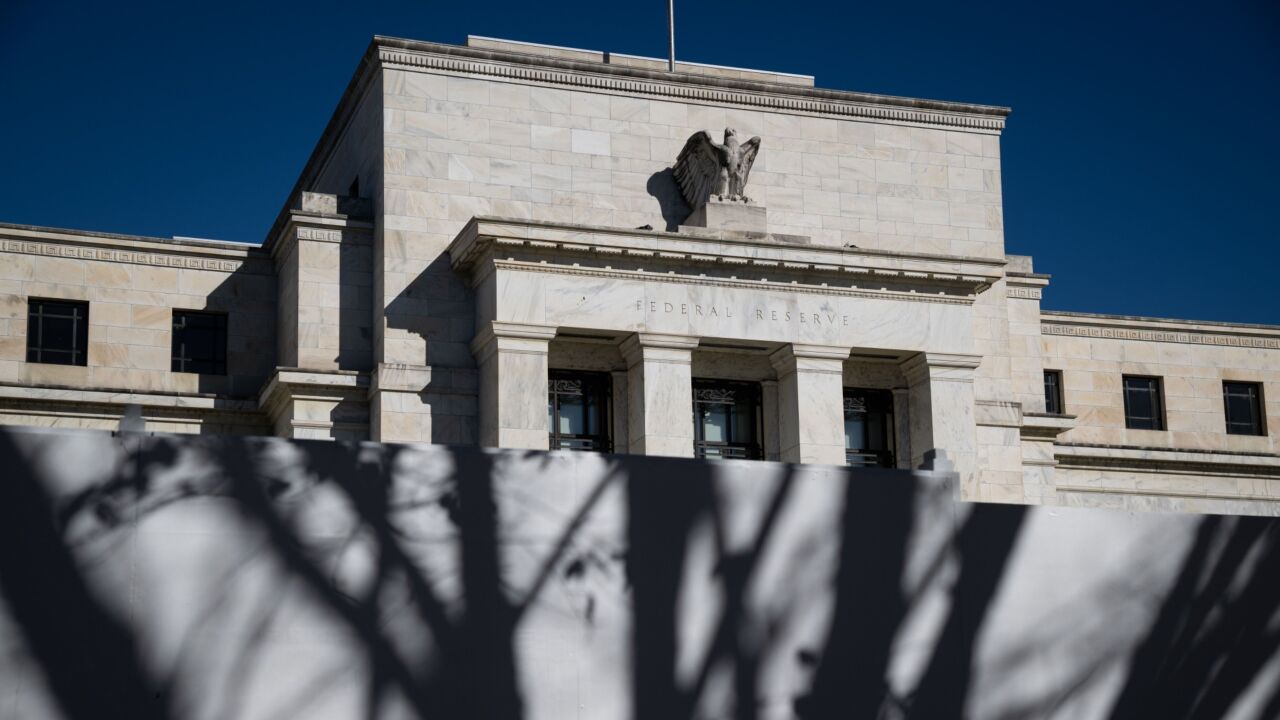
Big U.S. banks are navigating a choppy environment just two years after the last round of turmoil, this time with almost no one questioning the industry's ability to ride out whatever is coming. That's because there's plenty of capital — ironically due to a buildup of financial buffers that bankers mostly opposed.
"This is the moment of peak capital for the industry," said Mike Mayo, the veteran bank analyst at Wells Fargo Securities. "When you look at the entirety of capital, reserves and earnings power, banks are about as resilient as they've been in a couple of decades."
Capital at 20 of the largest U.S. banks surged by more than $175 billion in the past three years. This brought the most carefully watched metric — Tier 1 common equity — to almost $1.3 trillion by the end of last month.
There's so much cash sloshing around that bankers are planning to return more of it to shareholders. A preliminary tally shows 20 of the largest banks bought back at least $26.56 billion of shares in the first quarter. This includes $7.1 billion by

To industry observers like Mayo, it's an overdue swing of the pendulum, after banks were prodded to stockpile capital following the Great Financial Crisis and in anticipation of higher requirements proposed by Biden-era regulators to meet Basel III international standards.
The proposal, which followed several big bank failures in 2023, mandated an aggregate 16% increase in Tier 1 Common Equity for lenders with more than $100 billion in assets. Known as CET1 in bank lingo, it's the highest-quality capital that can absorb losses the most efficiently.
Bankers have fought hard against the surcharges, with vocal opponents like
While Mayo
Luxury buffer
For some CEOs, a little extra resilience might not be so bad, with new tariffs potentially disrupting business activity, weakening loan demand and hindering borrowers' ability to repay.
"In an environment like this, having excess capital — and you could argue that we do — is not a burden but a luxury,"
The board of the Cleveland-based bank has authorized share repurchases of up to $1 billion. The decision was made in March, although it was part of a long-term strategic plan that wouldn't have been altered by the tariff announcement, Gorman said.
Better yields
To bolster capital,
The drag on capital from underwater holdings can also ease naturally over time as bonds mature, said Citizens Financial's CEO Bruce Van Saun. Citizens expects by the end of 2026, about $500 million in unrealized losses will burn off, improving its adjusted CET1 ratio, which was 9.1%, by 30 basis points.
"Certainly the economic backdrop is dynamic with the recent news, but I think if we look at
All three of those regionals expect to repurchase shares in the months ahead. The tally was $200 million for Citizens in the first quarter and $662 million for
Total returns
The buybacks come on top of dividends. All told, for instance, Citizens returned $386 million to shareholders this year counting the cash payouts.
Those efforts are dwarfed by Citigroup, whose stock stubbornly trades well below tangible book value. The New York-based bank's $20 billion buyback program
"We continue to feel good about that program as you would expect," Mason said on the earnings call. "That is a smart thing to do."





